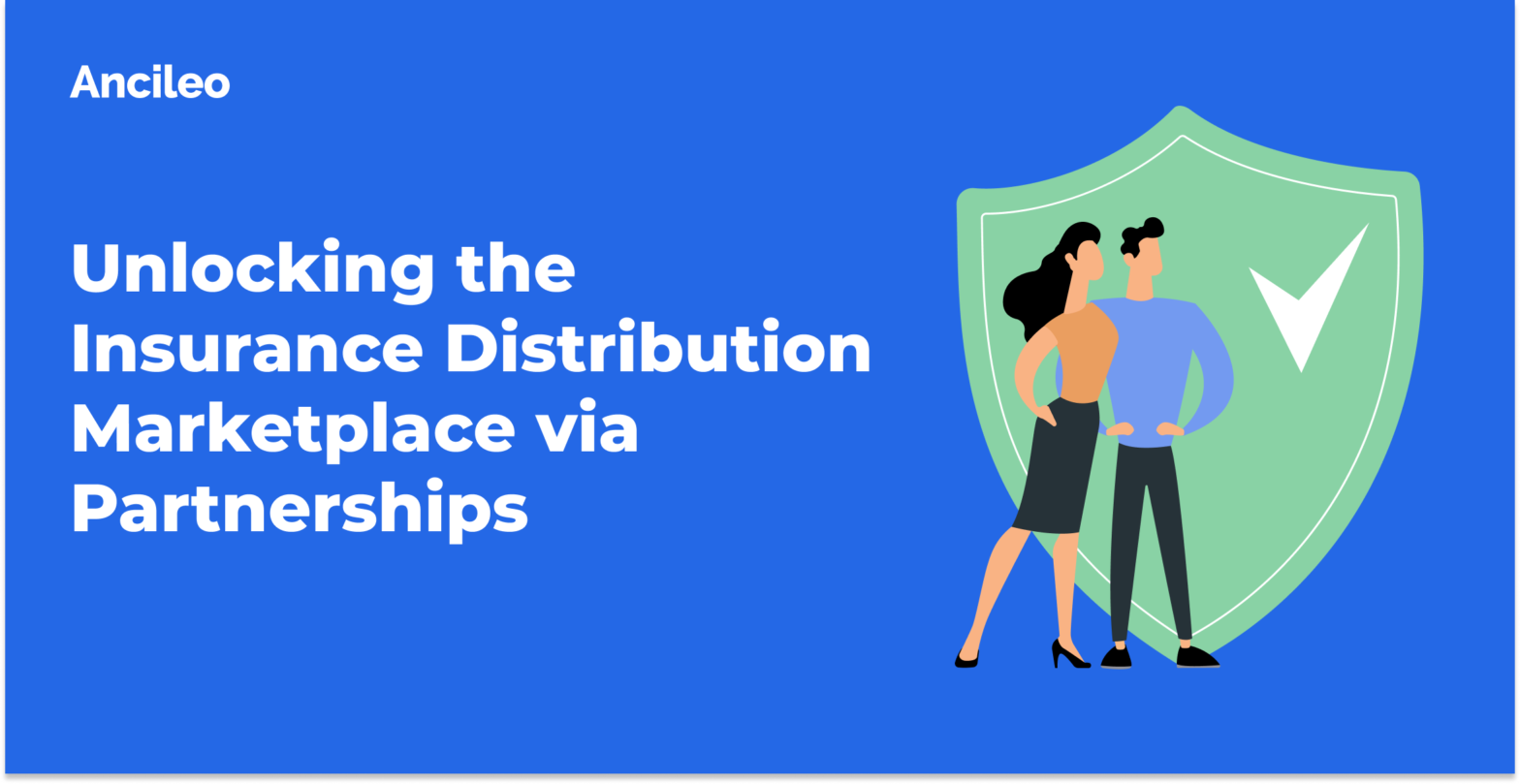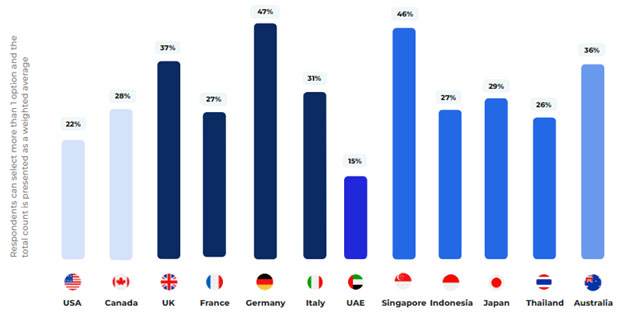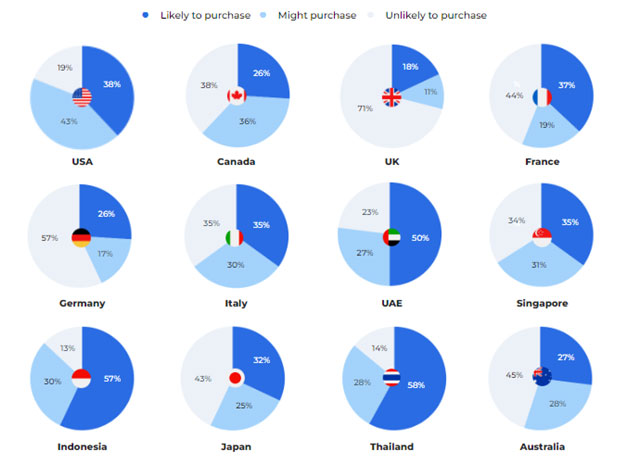
Where emerging industries and businesses become part of shared economies, we see an increasing shift from competition to collaboration in the strategies adopted by businesses to adapt and grow their revenue sources.
For example, to stay relevant in the insurance marketplace, it will no longer suffice for insurers to only work on innovating the product, aka tweaking the policy terms and developing new policies; but to look beyond their products to tap on and/or exchange expertise with other partners to reach out to their target markets and improve service delivery for customers.
Partnerships between travel players and insurance are mutually-beneficial – basically two sides of the same coin.
Where does the “partnerships” model stand with travel players and global insurers? How likely are potential customers to purchase insurance via in-path means? What are the key motivational factors for them to get insurance via travel players? Read more to find out.
Grace Li, VP, Team Lead Innovation at Swiss Re, pointed out that one of the consumer trends that is not only limited to the travel industry is the increased use of digital touchpoints for insurance purchases. What this means for partnerships is that most of them would center around new technology and innovation.

Multiple digital touchpoints across the customer’s purchasing journey
(Source: Ancileo’s 2021 World Travel Insurance Benchmark For Airlines)
Insurers offer their risk management expertise to their partners, while distributors hold valuable data assets of their potential customers. Hence, technological innovation is targeted at digesting these data into greater personalization of policy plans, which can translate to more affordable and attractive pricing schemes, as well as a convenient, seamless purchasing journey for your customers.
Within the travel industry, Airlines and OTAs are rated as the top travel players to purchase travel insurance (TI) apart from insurers.

Global Travellers Openness to Buying TI from Travel Players
(Source: Ancileo’s Global Travel Insurance Market Research 2022)
Looking at Airlines, slightly over half (54% of the airlines we surveyed) offer embedded insurance in-path.
Stop! Before we move on, let us clarify the difference between partnerships vs. embedded insurance partnerships via in-path or in-booking path. Not white labels, not website advertisements, and not redirecting purchases to another website… In-path purchase is an option integrated within the airline booking website that allows customers to buy their TIs as soon as they have confirmed the purchase of their flight tickets.
Interestingly for the airlines with more than 1 million monthly visitors, about 94.1% of them have some form of insurance partnerships with a majority of 63.1% of that percentage having insurance embedded in their booking paths.
As a result of COVID-19 among other unexpected situations beyond our control, many Airlines are now providing that additional option for potential customers to purchase TI while they are making their travel bookings enabling them to maximize their financial protection in the cases of flight cancellations due to change in border restrictions and last-minute circumstances preventing travel.
“As an outcome of our collaboration with our insurer partner, we implemented the flexibility for our passengers to change or maintain the insurance coverage period followed by their flight.”
– Chulin Kocharoen, VP Sales and Acting VP Marketing, Bangkok Airways
“We intend to launch Travel Insurance with our travel insurance partner in early Q1 2022 in the Indian market and then by Q2 in the global market, based on the current travel requirements and the safety of all travellers.”
– Prateek Gautam, Global Growth, Strategic Alliances & Partnerships, Vistara
Melisa Irwan, Business Manager Ancillaries of Malindo Air, puts forward that partnerships aren’t just a one-time affair of a ribbon-cutting ceremony and leaving it to the tech team to embed the insurance offering on the Airline’s website.
Relevance of the product offering is key to optimizing your customer experience (CX). The product pricing and benefits have to be regularly reviewed between the insurer and the Airline to maintain the relevance of the plans to meet the needs of the consumers in the everchanging travel landscape.
On the marketing end, it also requires syncing up between the insurer and Airline to refine the marketing message to suit the current climate. A joint campaign can be considered to create awareness and drive sales to optimize the benefits of the partnership for both parties.
Majority of the consumers still prefer to purchase their insurance via the insurer. However, that doesn’t omit all other opportunities for cross-selling between the insurer and other distribution partners.

Insurers direct channel still preferred but open to purchase from travel players
(Source: Ancileo’s Global Travel Insurance Market Research 2022)
This being said, the technology and innovation from the insurer’s end is key to enabling cross-selling to work on both ends, and to provide a seamless experience for your customers in the post-purchase stage.
For AXA, they have developed a digital wallet which enables communication with customers post-purchase, and this capability can be leveraged by partners and by AXA to provide relevant information about their holiday, their travel insurance, and to sell additional partner ancillaries or offer incentives on the next insurance purchase.
To optimize the CX on the app, AXA is also working closely with its partners to launch a new standard wording, product and pricing, enabling greater operational efficiency and consistency, reducing time to market for their partners, and cutting their cost of delivery.
READ MORE: Ancileo Blog – 2021 Best UI/UX Practices for Embedded Travel Insurance
Aforementioned that majority of the consumers still prefer to buy from insurers directly, this is likely as a result of the consumer trust that insurers have benefited from. That said, how can insurers go about fully monetizing this appeal that they have? The importance of digital capabilities and services of insurers is elevated for them to continue to retain existing and draw in potential customers.

Global travellers that prefer to purchase directly from insurers
(Source: Ancileo’s Global Travel Insurance Market Research 2022)

Global travelers willingness to purchase embedded (in-path) travel insurance
(Source: Ancileo’s Global Travel Insurance Market Research 2022)
On the other hand, when potential customers are proposed with the option to get TI on the distributor platforms, what are the motivational factors for them to opt-in on TI purchase? Considering that more than 80% (81.1% of the airlines surveyed) of the airlines have an opt-in for TI purchase, how likely are these customers to check the box to top-up TI on top of their flight bookings?
Three consistent factors were identified across the travelers from the 12 markets we’d surveyed:
On the flipside, we would also want to address the factors that prevent consumers from wanting to purchase TI via the distributors and what this means for next steps for partnerships. Two factors stood out:
Generally, consumers still perceive insurance purchases having a consequential impact and that convenience may be a double-edged sword as a one-click purchase may also be seen as a “too good to be true” deal. Most of them who are unlikely to opt-in for TI purchase are still skeptical, and this is exacerbated by the rise in online scams and frauds on digital platforms. They may still prefer to spend that extra effort and time to compare policy plans and read through the terms on their end.
Is the ball now thrown back to the distributors to enable that option and/or to discern which service provider to partner with? For insurers, consumers often find policy terms “dense and unreadable”, and there is certainly much more to be done with the presentation of policy terms and conditions by simplifying the wordings to improve the readability; as well as providing the user experience (UX) on their platforms.
The insights gathered in this article were based upon two research decks produced by Ancileo:
A market research done on 140 Airlines, for Airlines. You can find detailed information ranging from their global monthly website traffic, overview of their GDS and travel insurance providers to real-life demonstrations of TI integrated in the booking path.

READ MORE: Ancileo Blog – 2021 World Travel Insurance Partnership Benchmark for Airlines
If you are from the airline industry, contact us here to get free, full access to the full research deck.
2022 Travel Insurance Outlook is a 180+ pages report which encompasses insights into how consumer sentiments towards TI have changed in the endemic, key features of TI during this period, and what this means for distributors and insurers in 2022.
Consumer market research was done with 4,800 participants from 12 markets (Canada, United States, United Kingdom, Italy, Germany, France, United Arab Emirates, Singapore, Thailand, Indonesia, Japan and Australia); and in-depth interviews were done with industry experts coming from Airlines, OTAs and travel solution providers.
Download the Global Travel Insurance Market Research 2022 for FREE